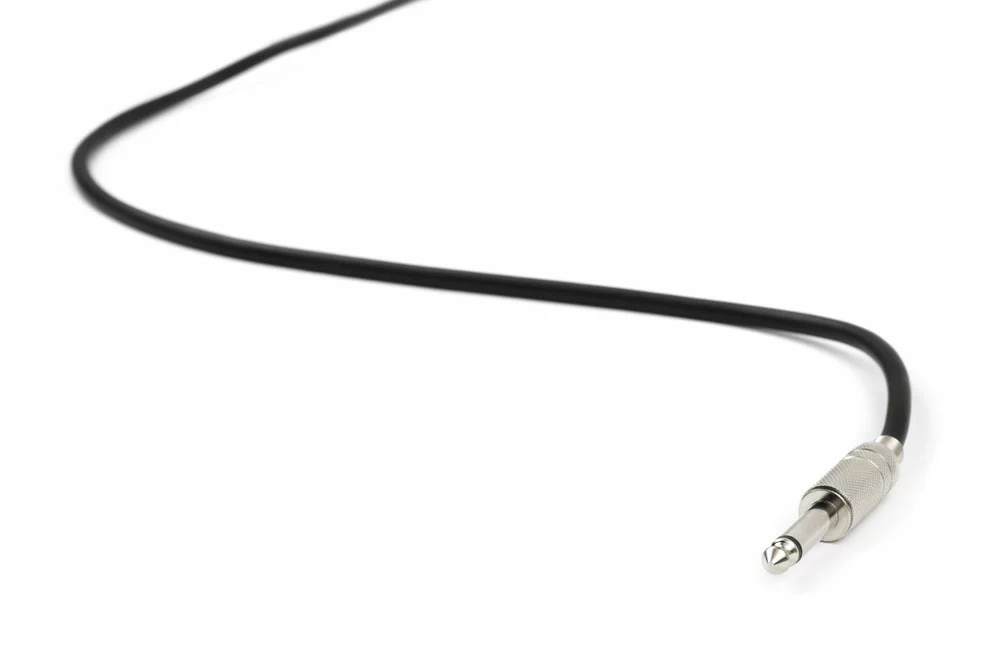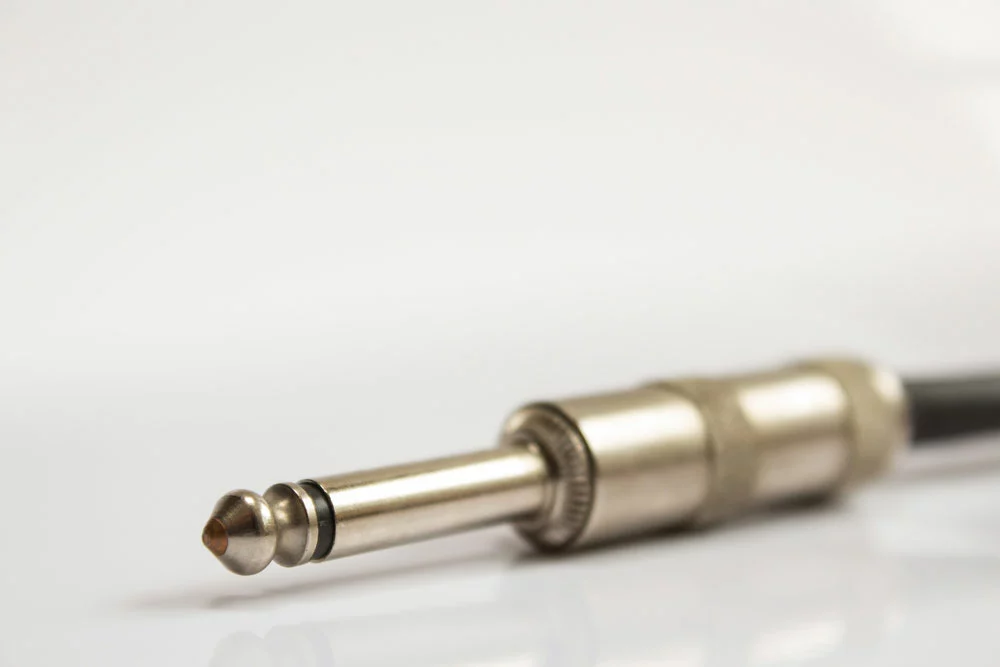The most common sizes for audio cable plugs are 1/4 inch and 3.5mm. And the tip, ring, and sleeve make up the three parts of a 14-inch and 3.5mm connector. The number of conducting parts sets apart the various connectors. If a signal is to transmit down a cable, there must be a full electrical connection between the receiver and the source. Two wires are required for a full circuit. Also, the cable’s conductors are linked to each connector segment. Because of their layouts, different connectors can carry various signals. That may involve one-way or two-way, mono or stereo, and balanced or unbalanced signals. Let’s explore the various cable types: TS audio cable, TRS audio cable, and TRRS audio cable.
Table of Contents
TS Audio Connectors (Tip-Sleeve)
TS stands for tip and sleeve. The TS connector has only two points of connection available; audio and ground, making only one circuit at a time. That is why these cables only produce mono audio.
TS audio cable: 1/4-inch TS Cables
Since there are two conductors, you can make an electrical circuit between the source and the target without further components. Instrument cables that are one-quarter of an inch in diameter and consist of a signal wire encircled by a shield transmit unbalanced signals.
Now, what we mean by unbalanced signals is that they contain noise. When the source point is far away from the output, the signals pick up noise on the way. Hence, using the ¼ TS cables is better when both connecting points are near each other. A classic example can be connecting an electric guitar with a nearby amp.
The exterior of both types of 1/4-inch speaker cable looks precisely the same. Nevertheless, there is a significant difference: two identical wires make up a speaker wire and do not have a shield.
TS audio cable: 3.5mm TS Cables
3.5mm TS connectors aren’t exactly common, although you have encountered them occasionally. Hence, consumer microphones and other infrared control systems are accessories.

TRS Audio Connectors (Tip-Ring-Sleeve)
TRS stands for tip, ring, and sleeve. For stereo audio, where you need left and right connections, TRS cables are perfect. It has three points of connection, left, right, and ground. So, it allows you to create two different signal flows, i.e.
TS audio cable: 1/4-inch TRS Cables
The cable’s three separate connections show that you can connect it to three different locations. These days, 1/4-inch TRS cables transmit balance signals with no noise.
In balanced signals, the source transmits two waves to the output. These two audio signals reverse each other, and upon reaching the output, they sync together perfectly. Also, if these signals pick up any noise on the way, the syncing at the endpoint cause it to cancel out permanently, and you hear a clear voice. Hence, TRS cables work best for source and output points far from each other. Two signal lines and a shield make up a set.
3.5mm TRS Cables
A stereo signal transmits its left and right channels over a 3.5mm TRS cable. Moreover, the sleeve connects to a third conductor, while the tip and ring transmit the left and right signals, respectively. This third conductor connects the left and right circuits and serves as a shared terminal.
A stereo signal transmitted via a TRS wire is balanced. Thus, you can expect high-quality sound transfer and sonic clarity from this male-to-male 3.5mm TRS stereo connection. Also, you can plug the gadget into an auxiliary input.

TRRS Audio Connectors (Tip-Ring-Ring-Sleeve)
Tip-Ring-Ring-Sleeve is the acronym for the TRRS connection type. Also, this connector has four individual contacts, allowing eight possible connections. These four contacts are left, right, ground and microphone.
Thus, you can use your headset’s mic with TRRS connection cables. And that is why it is the popular type of connector you will see on every wired headset and hand frees. Also, many options are available to convert the TRS socket to TRRS one, allowing you to use your modern headsets with old laptops with separate mic and stereo sockets.
Very few devices use TRRS cables with a diameter of 1/4 inch. Usually, you can only find 3.5mm connectors in TRRS options.
3.5mm TRRS Cables
The 3.5-millimeter TRRS cable is widely used. Thanks to four jacks, you can plug in a mic and left and right speakers. In this example, a single connection is the final link in all three circuits.
We suggest using an extension lead like a 3.5mm TRRS headphone cable to lengthen a wire with a TRRS connector.

Conclusion
There are three kinds of audio cables; “Tip and Sleeve” (TS), “Tip and Ring and Sleeve” (TRS), and “Tip and Ring and Ring and Sleeve” (TRRS). You can identify them in auxiliary and quarter-inch cables by the number of contacts they feature at one end. Since there is only one contact on a TS cable, they transmit “mono” signals.
Many people automatically associate a TRS with stereo since the ring adds a second contact, allowing for separate left and right audio channels. Finally, a TRRS cable typically has three audio channels (left, right, and mic) rather than just two. You can find TRRS cables at the end of headphones or earbud sets with an inline controller and a mic. Hence, you can communicate with the device via its inbuilt mic.
Counting the number of black rings on the cable’s head is a quick and easy technique to tell the three types apart. The TS ring is one, the TR ring is two, and the TRRS ring is three.
